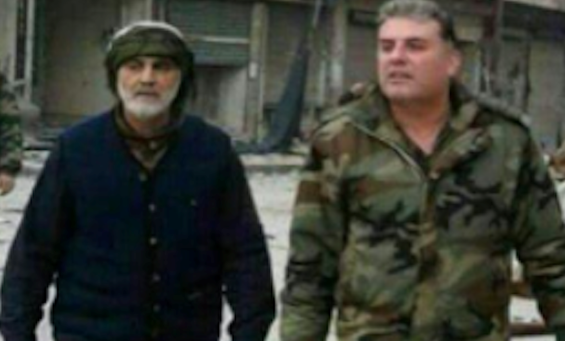Writing for The National, Gareth Browne takes a look at “The Glass House”, the center of operations for Iran’s military in Syria.
The glass tower is at Damascus International Airport, a few hundred meters from the main terminal. It is also close to Bashar al-Assad’s palace, where other Iranian military advisors are based.
Since the Syrian uprising began in March 2011, Iran’s military has helped prevent the collapse of Assad and regime forces. From autumn 2012 it built up militia, with a target of 50,000 personnel, to support and even supersede a regime army depleted by casualties and defections. In 2013, it organized the intervention of Lebanon’s Hezbollah, which prevented the loss of much of southern Syria to rebels.
Iran’s Quds Force, the Revolutionary Guards branch for operations outside the Islamic Republic, has led the effort. Under the direction of Qassem Soleimani, it worked with Russia from 2015 to reoccupy much of Syria.
Soleimani was assassinated by a US drone strike near Baghdad International Airport in Iraq on January 3.
Directing the Militias
Browne’s investigation highlights how the Quds Force has directed tens of thousands of foreign militia from The Glass House. The tower has its own medical facilities, including an intensive care unit, and a control room watching across Syria through satellite feeds from drones. There is even a “women’s section”.
Set across the other floors are departments dedicated to everything from interpretation to report writing. Another floor hosts a department they call the “women’s sections”.
After Soleimani was assassinated and replaced by Maj. Gen. Esmail Qa’ani, militia leaders wre summoned to The Glass House for urgent meetings.
Among those brought in were commanders of Liwa Fatimiyoun (Fatimiyoun Brigades), the Afghan fighters organized by the Revolutionary Guards. The men, living in Iran, were recruited with offers of money and permanency residency as well as threats against them and their families of expulsion. They have been used as frontline troops — described by some analysts as “cannon fodder” — in offensives to regain territory and to repel rebel attacks.
Recent meetings have also discussed ammunition transfers with Hezbollah. The operations have been complicated by recurrent Israeli missile strikes, including on Damascus International Airport on January 20.
The strikes have closed on The Glass House since 2018, when suspected Revolutionary Guards positions — only 500 meters away — were hit. Last November, an Israeli missile damaged the top two floors of The Glass House. Despite claims that the building was abandoned, sources said it was soon back to full operations.
However, Browne writes from his sources that the Iranians are diversifying their operational headquarters because of the Israeli threat. Centers have been established in an abandoned hotel near Palmyra in central Syria, and the other at a research center near Aleppo.
The Israeli attacks have expanded across Syria against Iranian, Hezbollah, and Assad regime targets, including command positions munitions deports, and vehicles with militia officers. At least seven strikes have been carried out since mid-April.
On May 4, Israeli missiles landed near Aleppo, close to the Scientific Studies and Research Center, a vital part of the regime’s chemical weapons program as well as the development of missiles and advanced munitions.
It is unknown if the attack also targeted the Iranian headquarters that reportedly set up close to Syria’s largest city, fully reoccupied by pro-Assad forces in December 2016.
See Syria Daily, June 1: Reports — Another Airstrike Kills 5 Iran-Supported Militia
Syria Daily, May 5: Israel Hits Regime and Iran Near Aleppo

